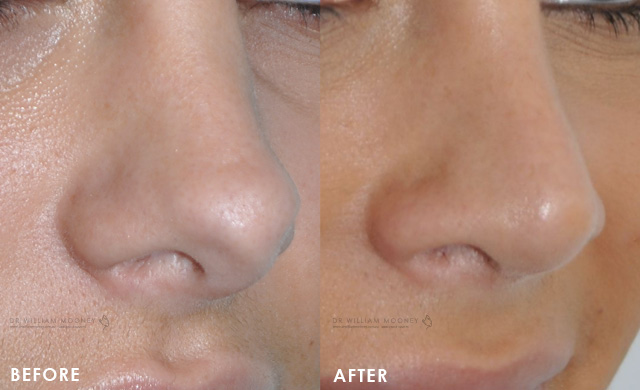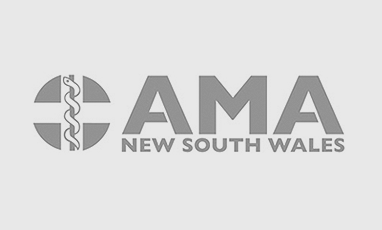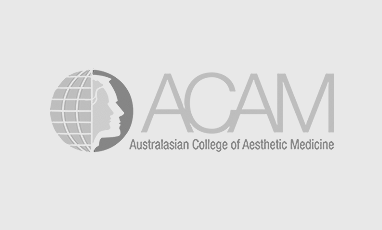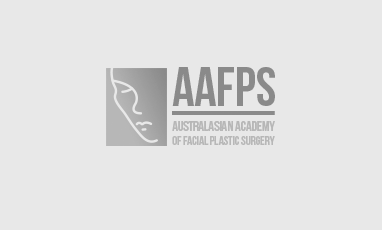WHAT IS REVISION RHINOPLASTY?
Revision rhinoplasty is a surgical procedure undertaken in order to correct concerns about the initial rhinoplasty surgery known as ‘primary rhinoplasty’. An individual may seek revision rhinoplasty for various reasons including aesthetic concerns, functional issues, or commonly, both.
In most cases of revision rhinoplasty too much or too little tissue has been removed in primary rhinoplasty causing cosmetic and/or functional problems Nasal symmetry may also be a concern for patients following primary rhinoplasty, and frequently airway problems have not been sufficiently addressed.
BEFORE & AFTER
Post images are taken between 3 to 6 months
after procedure. Individual patient results may
vary due to many factors including the individual’s genetics, diet and exercise, these pictures do not in any way guarantee
a specific outcome. The outcomes shown are only relevant for those patients, and do not necessarily reflect the results other patients may experience. DISCLAIMER
REVISION RHINOPLASTY
Dr. Mooney performs a very high number of rhinoplasty surgeries. He also has significant experience in revision rhinoplasty, with a wide referral base of patients with some of the most difficult cases. After becoming a Fellow of the Royal Australian College of Surgeons, Dr. Mooney completed his surgical training and traveled widely abroad to further his expertise. He completed formal training fellowships in rhinology at the Royal National Throat, Nose and Ear Hospital, London and the facial plastic and cosmetic fellowships with the Australasian Academy of Face Plastic Surgeons. He has attended visiting fellowships in further facial cosmetic surgery at the Lasky Clinic, Los Angeles. Dr Mooney regularly attends rhinoplasty conferences to stay up to date and to share his knowledge on his own successful revision rhinoplasty techniques.
Dr Mooney understands the distress patients may experience when they have had an unsuccessful primary rhinoplasty. Patients may have had a bad experience overseas, interstate or locally. Rhinoplasty is one of the most difficult cosmetic surgeries and problems may arise, particularly in the hands of a less experienced surgeon. Dr Mooney also understands that a significant challenge with revision rhinoplasty is not just the nose but the patient’s psyche, which is why he he is careful when identifying patients that may be in need of psychological assistance rather than surgical intervention. ‘Patients want perfection however realistically revision may only slightly improve function and cosmetics. A redo nose may never be perfect’, explains Dr. Mooney. He believes that honesty is always the best policy when it comes to revision: ‘I always tell my patients exactly what we are likely to achieve’.
Dr Mooney completes revision rhinoplasty from both a closed and open approach depending on the complexity of the case. The duration of revision surgery can vary greatly. Similarly to primary rhinoplasty, patients may need to wear an external nasal cast and internal nasal splints for 5-7 days post surgery. You may also have removable stitches between your nostrils if you have undergone open rhinoplasty. Although some changes may be seen immediately, the end result will not be determined until 6-12 months post revision after complete healing has taken place and all swelling has subsided.
New non-surgical rhinoplasty techniques are evolving and used extensively in our clinic. We often consider these in cases where there are more subtle presenting issues. Other conservative techniques such as in-clinic procedures can often obviate the need for formal revision surgery altogether.
Revision rhinoplasty can be a challenging presentation and one that must be planned and considered carefully.
Please contact our Patient Coordinator through our Online Inquiry Form or call 0484 900 384 to book a consultation today.
Any surgical or invasive procedure carries risks. Before proceeding, you should seek a second opinion from an appropriately qualified health practitioner.
FAQ’S
Expect to spend about an hour with Dr William Mooney for a thorough rhinoplasty consultation
A revision rhinoplasty consultation is quite different from primary rhinoplasty consultation because it is all about setting realistic outcome expectations.
The reality is achieving “perfection” cosmetically and functionally is not achieved in revision rhinoplasty cases. Improvement, of course is the aim, and we plan to get you towards a realistic ideal.
You will first be greeted by Dr Mooney’s receptionists, they will ask you to fill in a form with basic details.
One of Dr Mooney’s trained nurses will begin by taking high resolution images for subsequent digital images. The nurse will also provide a pre-consultation.
This is followed by a formal consultation with Dr William Mooney.
He will assess your full medical history and a medical examination is performed.
In particular, Dr Mooney will discuss any sinonasal problems or complaints and other associated problems with nasal dysfunction such as snoring or poor sense of smell and sinusitis.
Thorough examination ensues, Dr Mooney will perform a fibreoptic nasendosopic examination and test nasal peak inspiratory flow to thoroughly assess your nasal function.
We then move onto cosmetic assessment, using our digital photography.
We use real time high resolution imagery in both 2D and 3D to plan a new nasal contour for you.
Dr William Mooney will then discuss options, operative planning, risks and complications.
Revision patients must undergo a psychologically appraised prior to moving forward with the revision rhinoplasty procedure.
We always have at least two consultations before surgery. This cooling off period is essential as this is such an important life decision. It is a healthcare stipulation for young patients but we apply to all patients.
At our subsequent revision rhinoplasty consult we discuss the finer details of the pre-operative treatment; what to wear, eat, think and do as your operation approaches.
You will also revisit the digitally modified images and don’t move forward until the patient and doctor are fully appraised and happy with the plan.
Following you first consultation and psychological appraisal, the wait period for surgery is between three to six weeks.
Rhinoplasty has developed into a delicate, refined procedure.
Boney reshaping and remodelling is de reigueur, gone are the days of forcible fractures in rhinoplasty.
Revision rhinoplasty is surprisingly not a significantly painful procedure.
When you wake, your nose is already in a cast.
Swelling and bruising are common, as well as stuffiness but patient analgesic requirements are usually low. Of course every patient is different. Regardless your post operative comfort is important and will be monitored closely by our team.
After appropriate consent and planning, revision rhinoplasty is performed under of general anaesthetic in a theatre setting.
Where revision rhinoplasty is different from a primary rhinoplasty is that the nose has been modified by one of Dr William Mooney’s colleagues beforehand and we have a rough idea of the modification performed. However, we won’t know for sure until we get into the nose. It is a little bit like thinking on the spot, Dr Mooney has to assess – what changes have been made to the nose, what cartilage and bone we have left to work with and whether or not Dr Mooney will need additional cartilage or bone from other areas in the body or artificial products to complete the revision procedure.
A rhinoplasty can take anywhere between one to four hours depending on the complexity of the procedure. Revision rhinoplasty is far more complex and can take longer.
Bruising and swelling is variable but within two weeks’ patients are ready to re-enter the work place and society, in general.
Three weeks is ideal but two weeks seems adequate for most of our patients.
Dr Mooney and the pre-operative nurse will go through all of your operative planning a couple of weeks before surgery.
Some food stuffs such as chilli, garlic and galangal do increase prolonged bruising.
It can be either but we usually suggest overnight stay for patient comfort and support.
Our team will discuss accredited hospital options with you.
Dr Mooney performed his first rhinoplasty in 1997.
It is the aim of revision surgery that breathing is maintained or improved BUT revision rhinoplasty surgery can be hard and sometimes the improvement of breathing is minor at best. Dr Mooney will appraise you of the likely outcome of your breathing improvement at the time of your consultation and following the surgery.
Prior to your surgery, you may be advised to stop and start certain supplements.
Dr Mooney and the pre-operative nurse will go through all of your operative planning a couple of weeks before surgery.
Typically, Dr Mooney will ask our interstate patients to stay in Sydney for 10 days.
Rhinoplasty is process not just a procedure and patients must be prepared for follow up appointments, months following the surgery.
Typically, Dr Mooney will ask international patients to stay in Sydney for three weeks.
Rhinoplasty is process not just a procedure and patients must be prepared for follow up appointments, moths following the surgery.
Prior to your procedure, patients are required to lock in the post-operative appointments with Dr Mooney and the post-operative nurses. Dr Mooney and the pre-operative nurse will go through all of your operative planning a couple of weeks before surgery.
A small portion of this procedure can be claimed via Medicare. Depending on the level of health cover you have, there may be claimable items such as hospital cover. This will be determined following a consultation with Dr William Mooney.
When the cast comes off your nose there is significant swelling, but most patients can see the direction the nose is headed.
Dr Mooney performs both but given the superior results, especially in form and function of the tip and the near invisibility of any scarring, Dr Mooney favours the open rhinoplasty technique.
Yes, there will be across the columella (strip of skin between nostrils).
These stitches are removed day seven or 10 by your pre-operative nurse.
Scarring is minimal at most but darker skin patients can have a longer resolution time.
Face Plus Medispa’s services are available to Dr William Mooney’s patients. If a patient thinks the scar is unsightly, they can attend further treatments at the leading Medispa clinic.
Following the rhinoplasty procedure, no exercise week one, walking week two, light cardio week three is permitted, light weights week four and back to normal week five to six.
The results of a surgical revision rhinoplasty are permanent, but trauma, prolonged swelling or changes such as aging may change this.






